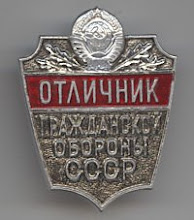I must apologize for my long respite from blogging. I've felt compelled to concentrate on my dissertation and several academic articles I've been working on. This effort has produced results--my article about Soviet civil defense has been accepted for publication, and I was interviewed for a TV documentary. As one might imagine, however, today I was distracted by the events in Japan.
My dissertation research is about nuclear disaster. I actually do basically sit around all day long reading about it, thinking about it, and writing about it. I have dreams about it. So of course, recent events have distracted me from getting my work done.
First and foremost, we should keep in mind the enormous human tragedy that has occurred due to this earthquake. The death toll keeps rising, and I'm sure there will be no definitive estimate anytime soon. But in the American media, at least, concerns about the nuclear plant problems have completely overshadowed the immense suffering millions of Japanese are facing right now. This is a national embarrassment. At the same time, I must admit I'm absolutely guilty of it myself.
Commentators began making comparisons to Chernobyl even before there was any real indication of problems at the plants in Japan. Such comparisons have grown increasingly common as the past two days have progressed. Usually, however, the focus is on the plants themselves and potential of actual radiation releases, and not on the emergency response to the reactor problems. On this score, I believe that the Japanese deserve our praise. Clearly, they have learned the lessons of Chernobyl and are applying them in practice.
By taking the steps of evacuating the region around the damaged plants and distributing potassium iodine tablets, the authorities have likely avoided the most dire human effects of any possible radiation release. Although I cannot find any sources at the moment stating if the evacuation effort is yet complete, once all residents have left the area the human effects of even a very large radiation release should be reduced to negligible levels. This is in contrast to Chernobyl, where authorities chose to pretend the situation was not serious, and left the residents of Pripiat in place well after the explosion.
Similarly, the Japanese government has decided to assume the worst in managing the stricken reactors at
Fukushima Daiichi. As of this moment Chief Cabinet Secretary Yukio Edano has stated that even though it has not been confirmed, officials are presuming partial meltdowns at
Fukushima Daiichi units 1 and 3. In the case of unit 1, the decision had already been made to use seawater to cool the containment, effectively destroying any hope of repairing the reactor. By presuming the worst, officials will escape the error of their Soviet forebears of allowing wishful thinking to prevent taking decisive action to prevent a wider catastrophe. Are these officials being overly pessimistic? Possibly. But they have a responsibility to prevent this accident from becoming another Chernobyl, and they appear to be taking those steps.
If the Japanese government is indeed "assuming the worst," then they are almost certainly readying plans for reducing the amount of radiation released by a possible containment failure at these reactors. Whereas the Soviet Union had to plan and carry out the construction of the sarcophagus over Chernobyl unit 4 in incredibly hostile and uncertain conditions, the Japanese have the ability to plan ahead. In this task they enjoy further advantages. While the BWRs suffering major faults have, frankly, not performed satisfactorily under the circumstances, they are still FAR superior to the RBMK design--even if the containment ruptures, the fact that the design includes a containment would make the task of "entombing" these reactors far easier. Furthermore, the plants are far more structurally intact than Chernobyl unit 4 was after it exploded--even Fukushima Daiichi unit 1, which suffered the dramatic hydrogen explosion.
Therefore, even if the worst-case scenario unfolds, there is reason to believe that proactive measures on the part of the Japanese can forestall a catastrophic radiation release. And it appears that they have the foresight to be thinking ahead. Unlike the Soviets, who hid behind a veil of secrecy and buried themselves in denial, the Japanese government has been forthright with its concerns and willing to face the possibility that things will not work out as hoped. I pray that their concerns will not be borne out, and that emergency measures at the plants will prevent further core damage. Still, they are absolutely right to approach the situation as they are.





